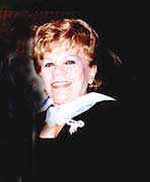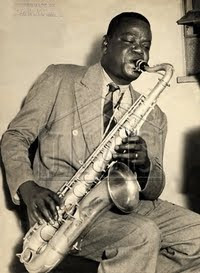
Choro is mostly instrumental, but there are exceptions of importance, one of them beeing the vocal contributions by Ademilde Fonseca (b 1921) of choro classics such as "Brasileirinho" and "Tico-tico no fúba". Ademilde Fonseca was elected 'Queen of Choro' following a successful career as a vocalist that spanned from the early '40'ies to the late 90'ies, her recordings, performances and cooperation with renowned choro composers and musicians are now highly estimated in Brazil and elsewhere.
A career profile in AMG by Alvaro Neder: "Moving at age four to Natal RN, with her family, Fonseca frequented the local serestas at a very early age, later marrying one of the participating musicians, Naldimar Gedeão Delfim. After the marriage, she moved to Rio in 1941, opening in Renato Murce's novice show Papel Carbono at the Rádio Clube do Brasil the next year. Also in 1942, she had success singing "Tico-tico no Fubá" (Zequinha de Abreu) with the regional of Benedito Lacerda. In July, she had her first record released, Tico-tico no Fubá. The album was received with success. In 1943, she recorded "Apanhei-te, Cavaquinho" (Ernesto Nazareth/João de Barro) and "Urubu Malandro" (adaptation by Lourival de Carvalho). Acknowledged as a successful singer, she became a requested professional by several composers. In 1944, she was hired by Rádio Tupi (Rio), performing with the regionais of Rogério Guimarães and Claudionor Cruz. In the next year, her recording of the polka "Rato, Rato" consecrated her as the best singer of the choro genre. Accompanied by Garoto and the Conjunto Bossa Clube in the last recording, Fonseca would also record new choros by Garoto ("Sonhador," "Celestial," "Meu Cavaquinho") with the same sidemen, an all-star team, in fact (Valzinho, Luís Bittencourt, Luís Bonfá, Garoto, Zimbres, Sebastião Gomes, and Hanestaldo). With the decline of choro in the '40s, her prestige also decayed, but she had hits again in the '50s with "Brasileirinho" (by Waldir Azevedo, lyrics added later by Pereira da Costa) and "Teco-teco" (Pereira da Costa/Milton Vilela), accompanied in both by the regional of Waldir Azevedo. In 1952, she performed in Paris, France, accompanied by Severino Araújo's Orquestra Tabajara. She recorded several albums that became hits until 1955. She also had noted participation at Rádio Nacional, having been accompanied by the regionais of Canhoto, Jacob do Bandolim, and Pixinguinha, and the orchestras of Radamés Gnattali and Chiquinho. In 1964, she toured through Portugal and Spain with singer Jamelão, performing six months in Lisbon. In 1967, the decline of choro was felt under the weight of a gross injustice when she was booed, together with Pixinguinha, who was accompanying her in "Fala Baixinho" (Pixinguinha/Hermínio Bello de Carvalho) at the II FIC. In 1970, she had success in shows at the Teatro Opinião, with her hits being reissued on the Top Tape LP of 1975. Also recorded in that decade was "Títulos de Nobreza -- Ademilde no Choro" (João Bosco/Aldir Blanc). In 1997, she recorded the CD Ademilde Fonseca -- Rainha do Choro with RGE."
You may listen to sound clips by Ademilde Fonseca at
clickmusic
Jo















